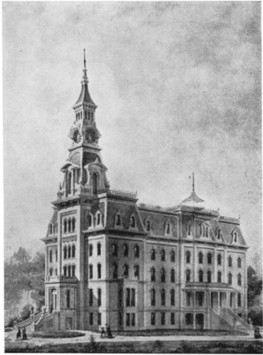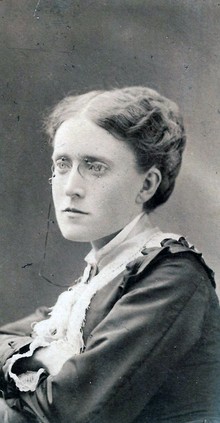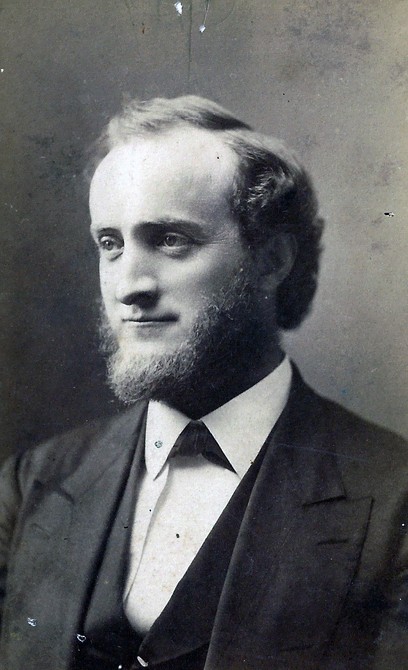Evanston College for Ladies
Introduction
Author-Uploaded Audio
Listen to a narration of this entry's description by Lori Osborne.
Text-to-speech Audio
Frances Willard's drive to educate women led her from North Western Female College to its successor. Willard was asked to become president on Valentine’s Day, 1871. As president of the Evanston College for Ladies until 1873, Willard worked with an all-women board of trustees to create a college operated by and for women. Evanston College for Ladies mainly provided room, board, and supervision to women enrolled in the program while they attended classics and science courses at Northwestern University. The college also offered instruction in fine arts, homemaking, manners, and language.
Images
Evanston College for Ladies

Frances Willard, Dean of Women at Northwestern University, circa 1872

Charles Henry Fowler, circa 1970s

Backstory and Context
Text-to-speech Audio
By 1868 it became clear that North-Western Female College had not achieved William P. Jones’ goals for high standard education for women. In 1868 Mary F. Haskin and several other women leaders of Evanston persuaded Professor Jones to merge Northwestern Female College with their new Evanston College for Ladies [1]. The new college was dedicated not only to educating women but also to being self-governed by women, including women as students, educators, and governing board members. In 1869 the state granted the Evanston College for Ladies a charter. Evanston gave the school land in a city park for its new building, and fifteen women were named to the board of trustees. The board elected Frances Willard the first president of the college on February 14, 1871.
Willard, following a trip to Europe with her good friend Kate Jackson, had been doing work around the family’s Rest Cottage home when she was asked to lead the college: “One day when Frank [Francis Willard] was busy nailing down the stair-carpet, Mrs. Kidder, whose husband was then leading professor in the Theological Seminary, came from her home across the street, and taking a seat on the stairs, said, "Frank, I am amazed at you. Let some one else tack down carpets, and do you take charge of the new college." "Very well,” answered Frank; " I shall be glad to do so. I was only waiting to be asked" [2].
Willard was deeply enthusiastic about the college and her position in it. In her 1889 autobiography, she recalled: “How many times have I thought, with regrets unutterable, of what it would have meant to my own education had all those doors been open in 1858!” [3]. One of Willard’s first tasks was planning and overseeing “The Women’s Fourth of July,” where the Evanston College for Ladies raised $10,000 and dedicated the cornerstone of the new college building. The event included a co-ed baseball game between Northwestern University and Evanston College for Ladies, which ended in a score of 57 to 4 [4].
Tragedy struck Chicago and the Evanston College for Ladies in October 1871, when the Great Chicago Fire struck the area and forced financial supporters to withdraw funding. “That fire changed the outlook of our college. Its hot breath shriveled our generous Fourth of July subscription list, impoverishing some of our most trusty friends and obliging us to cover up the newly-laid foundations of our great building [5].”
Due to the devastation the fire left behind, and in dire financial straits, the Evanston College for Ladies was forced to cede its property to Northwestern University. As a part of the acquisition, Northwestern University allowed five women onto the board of trustees, opened the Women’s College of Northwestern University, and Willard became dean of the Women’s College [6]. Kate Jackson, Willard’s close friend, also became a teacher at the new Women’s College, teaching French [7].
Charles Henry Fowler, acting president of Northwestern University at the time of affiliation, had been engaged to Willard for a short time before Willard called it off. This relationship and differing opinions on governance led Willard to leave her position in 1874. Later Willard would describe her “trouble” with Fowler: “Dr. Fowler has the will of a Napoleon, I have the will of a Queen Elizabeth; when an immovable meets an indestructible object, something has to give way” [8].
Sources
[1] Perkins, Margery Blair, and Barbara J. Buchbinder-Green. Evanstoniana : an Informal History of Evanston and Its Architecture 1st ed. Evanston, IL: Evanston Historical Society, 1984, 37.
[2] Willard, Frances. Glimpses of Fifty Years: 1839-1889 1st ed. Chicago, IL: Woman’s Temperance Publication Association, 1889, 198.
[3] Willard, Frances. Glimpses of Fifty Years: 1839-1889 1st ed. Chicago, IL: Woman’s Temperance Publication Association, 1889, 200.
[4] Perkins, Margery Blair, Jenny Thompson. Evanston: A Tour Through the City’s History. Evanston, IL: Evanston Historical Society, 2013, 27.
[5] Willard, Frances. Glimpses of Fifty Years: 1839-1889 1st ed. Chicago, IL: Woman’s Temperance Publication Association, 1889, 221-226.
[6] Perkins, Margery Blair, and Barbara J. Buchbinder-Green. Evanstoniana : an Informal History of Evanston and Its Architecture 1st ed. Evanston, IL: Evanston Historical Society, 1984, 39-40.
[7] Willard, Frances. Glimpses of Fifty Years: 1839-1889 1st ed. Chicago, IL: Woman’s Temperance Publication Association, 1889, 226-236.
[8] Willard, Frances. Glimpses of Fifty Years: 1839-1889 1st ed. Chicago, IL: Woman’s Temperance Publication Association, 1889, 356.
Frances Willard House Museum and Archives
Frances Willard House Museum and Archives
Frances Willard House Museum and Archives
